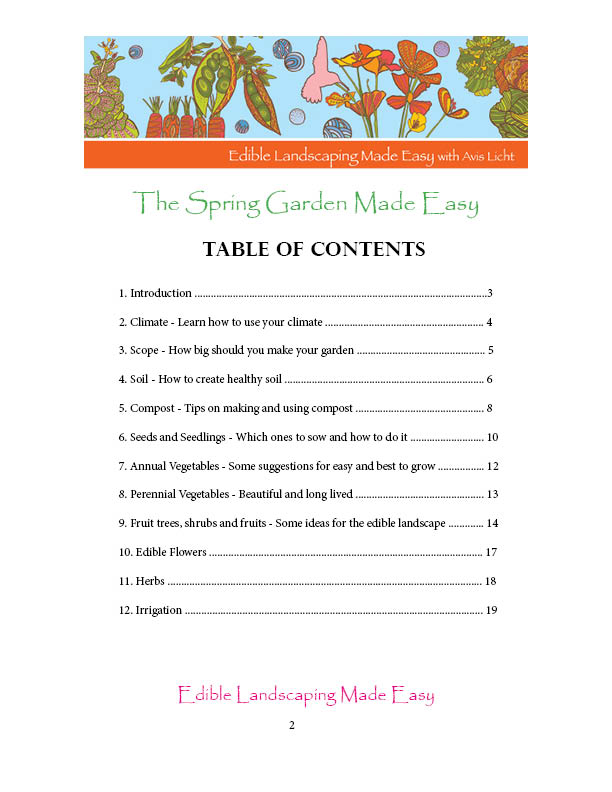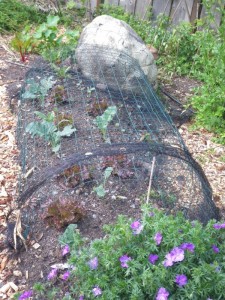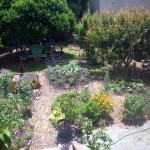
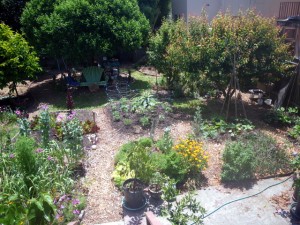
Take out the lawn and put in fruit trees, vegetables, flowers, bees and rabbits and you may just have the garden of eden.
By Avis Licht – What do you imagine when you hear the term “urban farm” ? To me it sounds big with rows of vegetables and possibly a barn with animals. But that’s not the reality of urban farms that I visited in Berkeley, California last week. Over the next few weeks I’ll be high lighting a variety of gardens/farms in the city. Some are backyards, some are vacant properties on loan to non profit organizations and some are community gardens.
Today I want to show you how one woman, Ruby Blume turned her backyard into a fully functioning mini farm, providing her with most of her food needs, including meat, honey, fruits and vegetables, mushrooms and plenty of beauty.
She co wrote the book Urban Homesteading with Rachel Kaplan and runs the Institute of Urban Homesteading in Oakland, California. They offer many classes in gardening, animal husbandry, kitchen skills, food preparation, handcrafts, permaculture and much more.
On Saturday, June 9th, 2012, they will be hosting an Urban Farm Tour from 11am – 5 pm in Oakland and Berkeley. Details and descriptions at iuhoakland.com
- Rabbits are ready to eat after 8 weeks
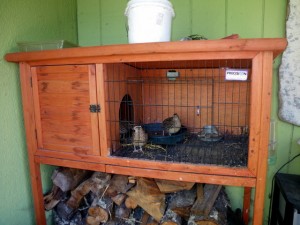
Quails -They don't take up much room, are beautiful to look at and apparently lay good eggs for eating. Lovely quail house.

 Follow
Follow

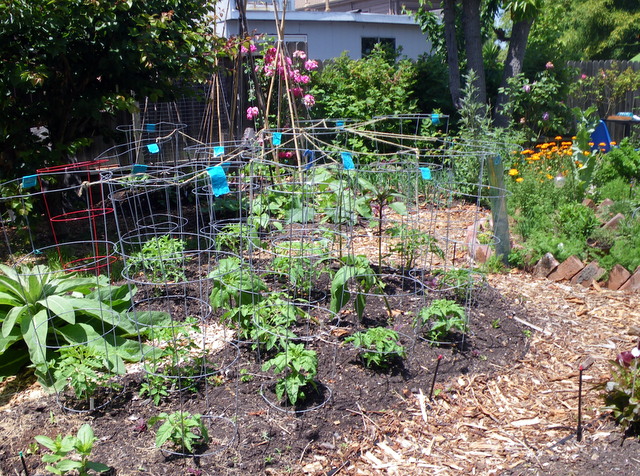
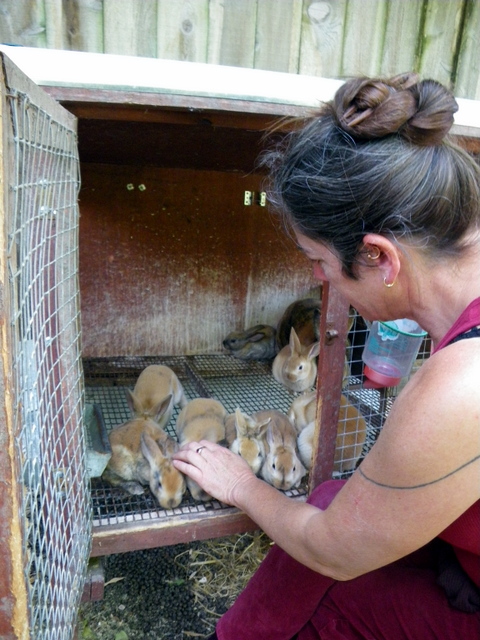
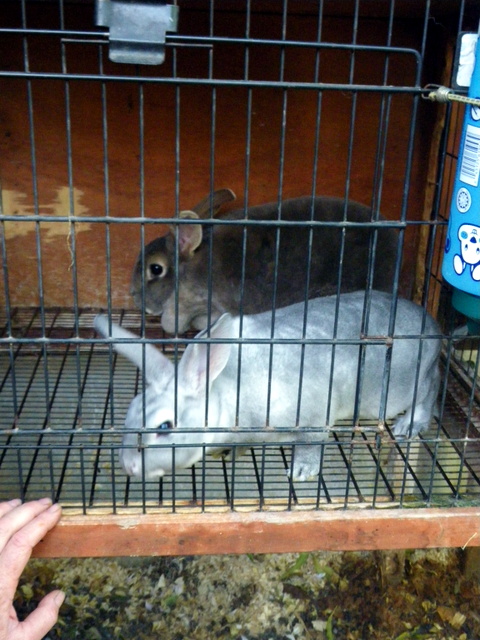
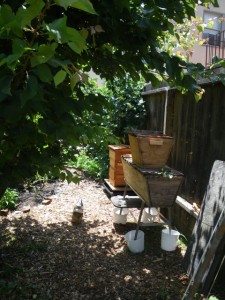
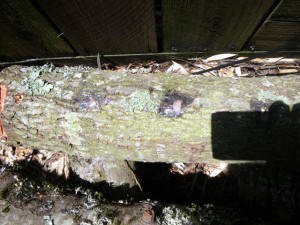
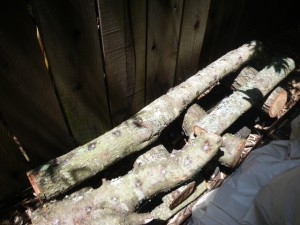
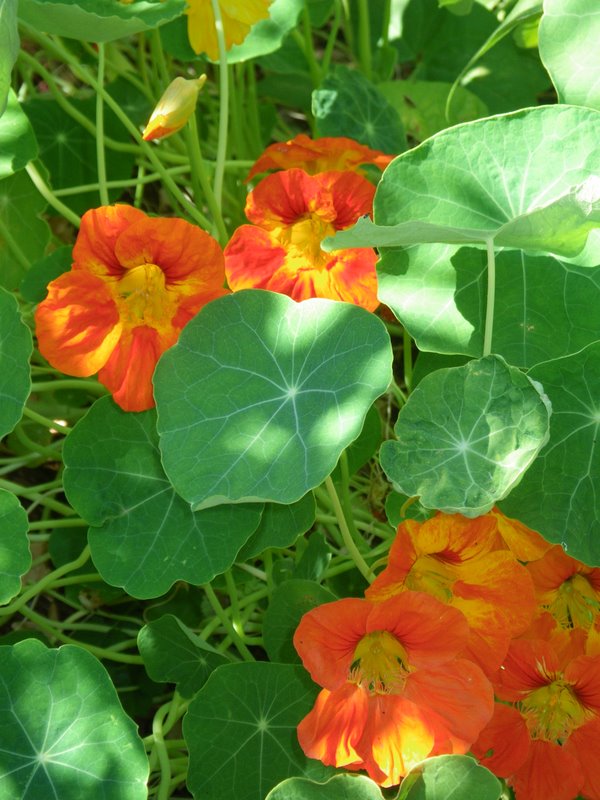
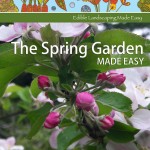
 Finally! Here at last! A streamlined, easy to follow e-book on how to start your spring garden. It covers climate, choosing your site, soil types, what to plant, compost and irrigation. After forty years of gardening it’s hard to know what not to share. In this book I’ve winnowed down the information for novice gardeners to encourage and guide them to successful food growing at home.
Finally! Here at last! A streamlined, easy to follow e-book on how to start your spring garden. It covers climate, choosing your site, soil types, what to plant, compost and irrigation. After forty years of gardening it’s hard to know what not to share. In this book I’ve winnowed down the information for novice gardeners to encourage and guide them to successful food growing at home.
